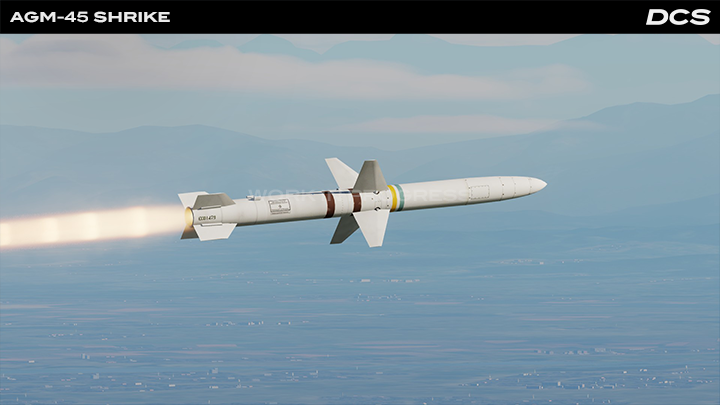
FONTE https://forum.dcs.world/topic/97330-dcs ... nt=5311888
Bye
Phant
Digitalcombatsimulator.com ha scritto:
DCS: F-4E Phantom II by Heatblur Simulations - Pre-purchase
The F-4 Phantom II is an American two-seat, twin-engine, all-weather, long- range supersonic jet interceptor and fighter-bomber originally developed by McDonnell Aircraft for the United States Navy. After entering service with the Navy in 1961, it became adopted by the United States Marine Corps and United States Air Force. Due to its high adaptability, versatility and for its time, unparalleled capabilities, it quickly turned into the main workhorse for all 3 branches and spread beyond the borders of the United States, going on to serve and protect 12 nations across the world, with Phantoms still in operation today. Its production ran from 1958 to 1981, and with nigh 5200 Phantoms built, it became the most produced supersonic US military aircraft in the history, solidifying its place as one of the most recognizable and well known aircraft of the cold war era.
It truly was an iconic and phabulous aircraft that, at its time, had unrivaled power and capabilities. It instilled a sense of wonder and awe, a beast that announced itself only with thunder. Unmatched in character and impression it was without equal, from the first time it took to the skies. A primeval spirit in aircraft form, it delivered shock that rattled to the core and protected many nations across the globe. While both an interceptor and potent air to air fighter, it proved its multirole capabilities as a true air to ground workhorse, and packed a serious punch. This unprecedented mission agility was reason enough for its lifetime to span well over six decades, continuing even today, and will translate to the rendition of DCS: F-4E Phantom II, as you fly and utilize its wide variety of weaponry across a broad spectrum of mission content.
Outstanding features of the aircraft are the powerful J- 79 twin engines with a dry thrust of 23,810 lbf and a max afterburner thrust of 35,690 lbf, a crew of two, the powerful AN/APQ-120 Radar, the Digital Scan Converter Group (DSCG), the Weapons Release Computer Set (WRCS), the Aircraft Weapons Release Unit (AWRU) and an Altitude Reference and Bombing Computer Set (ARBCS). The DSCG version of the F-4E also comes with the AN/AVQ-23 Pave Spike targeting pod, allowing for precision strikes and the (self-)-employment of laser guided ammunition. Additionally the F-4E can carry the AGM-65 Maverick, a wide array of iron and both TV and laser guided bombs, as well as the capability to carry out Wild Weasel (SEAD) tasks in a limited capacity with the AGM-45 Shrike.
Unlike previous Phantom variants, the -E comes equipped with an integrated M61 Vulcan cannon that can be used both in an air to ground and air to air role. It has an optical sight that allows for lead computing optical sighting (LCOS) in air to air, as well as the ability to carry additional Vulcan cannon pods. It can protect itself with the ALR-46 Radar Warning Receiver, the AN/ALE-40 countermeasures suite, the AN/ALQ-131 ECM pod, KY-28 encryption equipment and employs a range of early to modern era AIM-9 Sidewinder and AIM-7 Sparrow missiles for aerial combat that can be also used through the additional specialized CAGED and computer automatic acquisition (CAA) modes.
The Heatblur Simulations F-4E Phantom II aims to simulate this iconic aircraft as a high-fidelity module for DCS, being the culmination of several years of research, coding and modeling.
Special points of consideration amongst the many features are the external and internal graphic model created using laser scanning and photogrammetry from real Phantoms at various museums, the detailed External Flight Model (EFM) developed over the past several years and verified by real F-4 pilots and WSOs, the detailed modeling of the AN/APQ- 120 radar and the various systems on board and the ability to fly as a two- crew aircraft in multiplayer, as well as the proprietary JESTER-AI helping you as your AI-WSO in singleplayer.
Key features of the Heatblur Simulations DCS: F-4E Phantom II include:
- The simulation of both the DSCG and DMAS equipped -E variants, the DMAS version following later during the Early Access period.
- Highly-detailed external model that is built using laser scanning and photogrammetry taken of real F-4 Phantoms across the globe.
- New weapon models for some of the F-4 Phantom payloads like the AGM-45 Shrike, the AGM-12 Bullpup, the AGM-62 Walleye, and AN/AVQ-23 Pave Spike targeting pod.
- Highly-detailed and accurate 6-DOF (Degrees of Freedom) cockpit that is also built using photogrammetry from the F-4 Phantoms preserved at museums, including Heatblur FORGE elements to be added later during Early Access.
- Highly-detailed and accurate pilot and WSO models that will eventually match the many liveries and different nations. Later, during early access, a full character customization system will allow you to customize your pilot and pick and match various equipment to stylize your crew.
- Highly-accurate, F-4 pilot and WSO verified, External Flight Model (EFM) based on real performance data.
- Accurate aircraft systems simulation featuring:
- The Automatic Flight Control System (AFCS).
- Detailed electrical system that accurately simulates sources, current, and consumption. It includes realistic circuits and power draw for every connected device.
- Detailed Hydraulic System that simulates the flow of hydraulic liquid. This ultimately moves the hydraulics which in turn move the various flight surfaces, etc.
- Detailed and accurate oil and fuel system.
- Mass based physics system, allowing for unprecedented simulation of moving surfaces, with realistic behavior according to their mass and properties.
- Fully functional multi crew that allows a two-seat functionality in multiplayer. This allows a player as pilot to team up with another player as the Weapon Systems Officer, WSO.
- JESTER AI 2.0: Heablur’s new and improved lifelike AI that fills the role of the WSO when flying in singleplayer or multiplayer without a human WSO. JESTER AI 2.0 expands functionality, dialogue options, and more.
- A simulated Crew Chief for a more immersive and complete startup procedure.
- Later during early access, a brand new walkaround mode allows you to do pre-flight checks on your aircraft.
- A new versatile set of UI features that allows for live in-cockpit viewing of the manual and the ability to interact with the various settings and options pertaining to your mission and flight. This feature will be continually expanded during Early Access.
- Introducing Heatblur Interactive Tooltips that provide the ability to click on a switch and be directly taken to the relevant manual part without ever leaving your cockpit.
- New and improved effects like advanced overwing vapors, new procedural animation systems, and more.
- Detailed and highly accurate simulations of the AN/APQ-120 radar and ALR-46 RWR.
- A detailed simulation of the AN/AVQ-23 Pave Spike targeting pod that allows the WSO to guide laser guided munitions dropped by the pilot or other aircraft (buddy-lasing).
- A comprehensive digital manual, both as a PDF and as a continually updated online manual. It is directly accessible from within the cockpit at any time via Interactive Tooltips and/or the EBAG.
- A complete set of interactive and voiced tutorials.
- A comprehensive set of missions and campaigns to be gradually released during Early Access and beyond.
NOTE: Some features may not be available immediately at Early Access. The later F-4E DMAS equipped variant, including Pave Tack and TISEO, will follow during the Early Access period and the tutorials and campaigns will be implemented and expanded during Early Access as well.
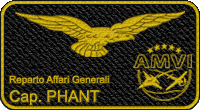

Magnitude-3.com ha scritto:
Chance-Vought F4U-1D Corsair
We’re in our second round of testing, and while most of the flight model’s parameters are to everyone’s liking, we still have a few areas to perfect.
For starters, we are currently fine-tuning glide ratios (GR) with a few scenarios, such as dead-stick flying, high & low RPM settings, and various flaps and landing gear configurations.
Issues arose when obtaining specific data criteria during testing. For example, collecting accurate and useful turn rate data is the most difficult of test-sets, as the aircraft must be flown in a precise coordinated manner. Unfortunately, we don’t have an aid in precisely controlling the aircraft in a turn with constant minimal deviations in speed and/or altitude. If anything goes wrong in the middle of the test, the test must be repeated due to the nature of data sampling. Pushing through, we were able to sample data at altitudes such as 100, 5000, and 10,000 meters.
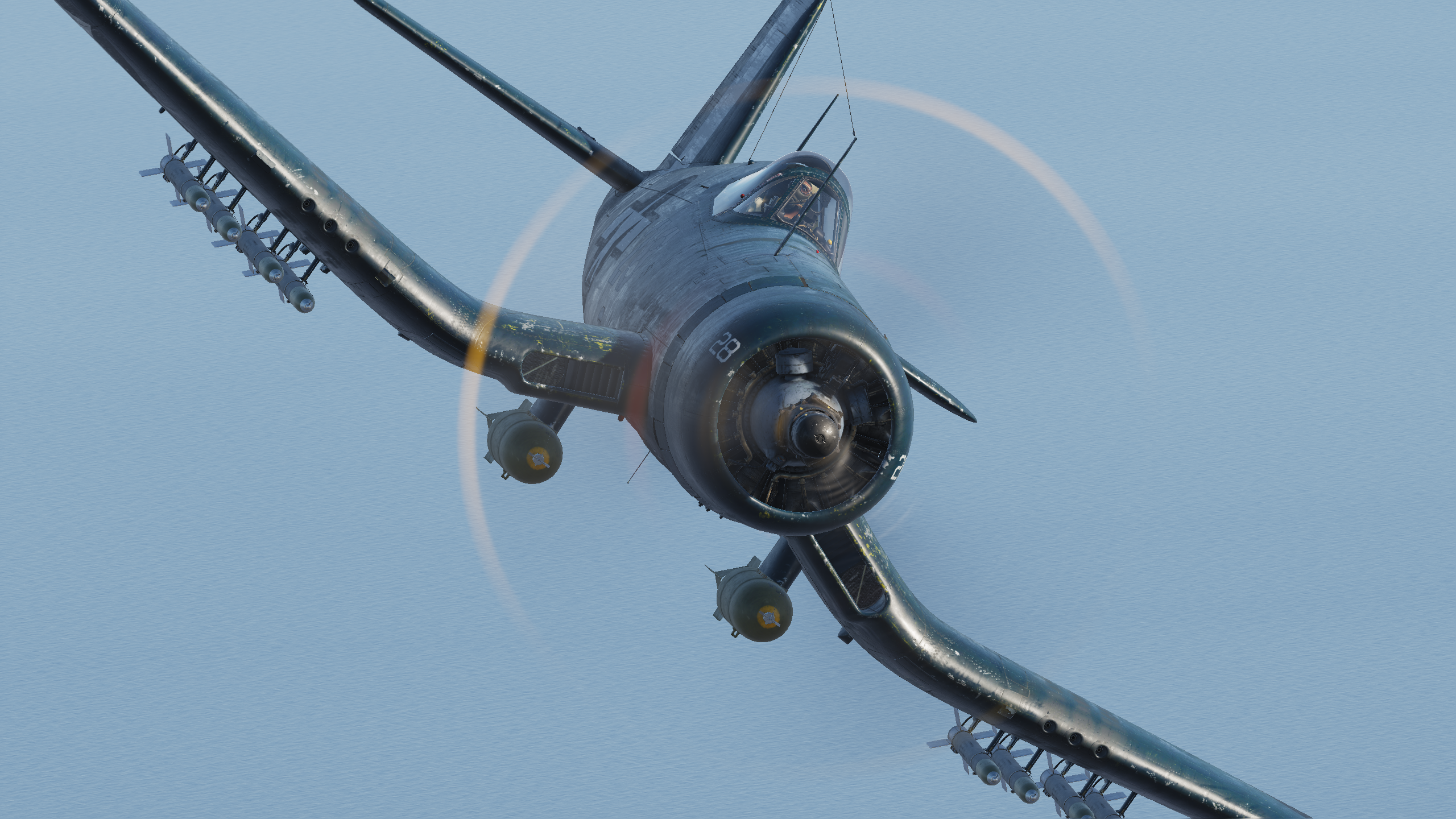
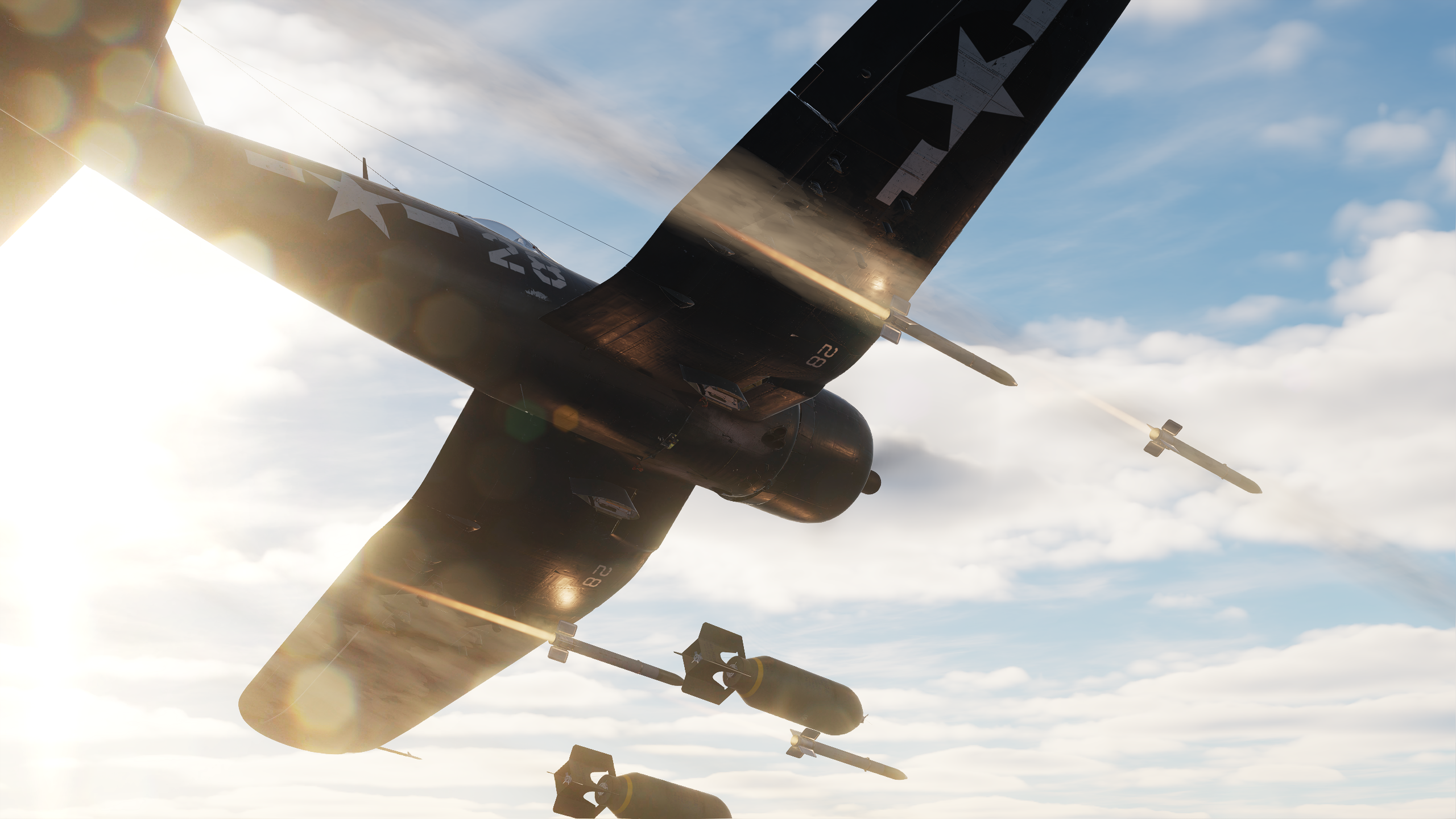
Similar to our MiG-21bis, we have programmed input and outputs to make up the difference for users’ joysticks and real life F4U-1 joystick travel. Documented elevator efficiency positions were used to find a good balance between reality and simulation whether users have short or long joysticks.
Other areas of importance that users expect to be realistic, range from stall speeds, roll rates, flight envelopes, climb rates, dive excess speeds, and high-speed maneuvering. All of which go hand-in-hand, creating unique F4U-1D quirks at different flight states.
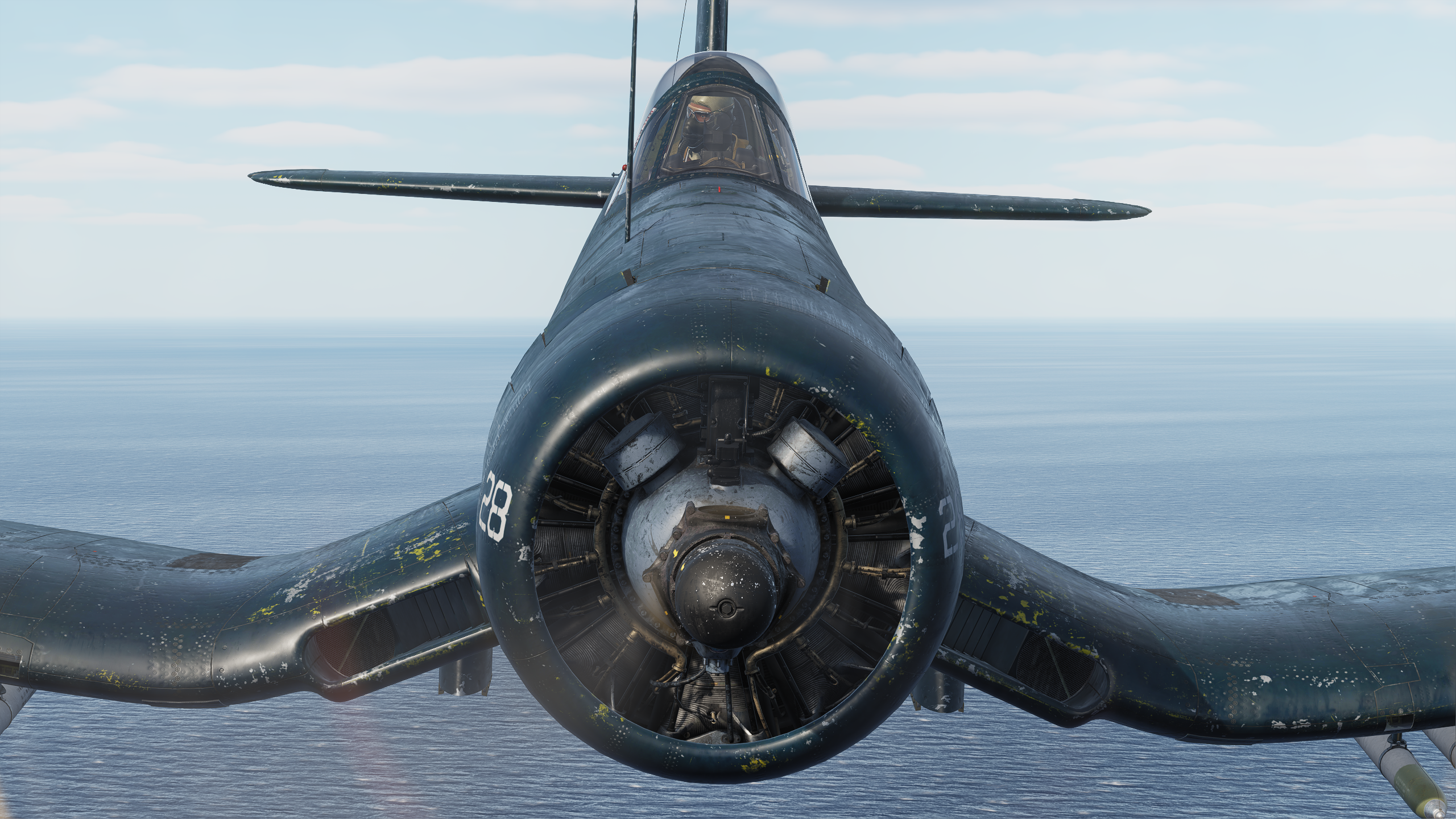
Over in the art department, we have been making numerous visually impressive advancements and wrapping up what’s left before release.
All textures have been adjusted, for the recent graphics improvements by Eagle Dynamics. Colors are more physically accurate, with casual wear-and-tear. And as promised, the highly detailed armored glass and Mk.8 Mod 8 gun sight have been implemented too.
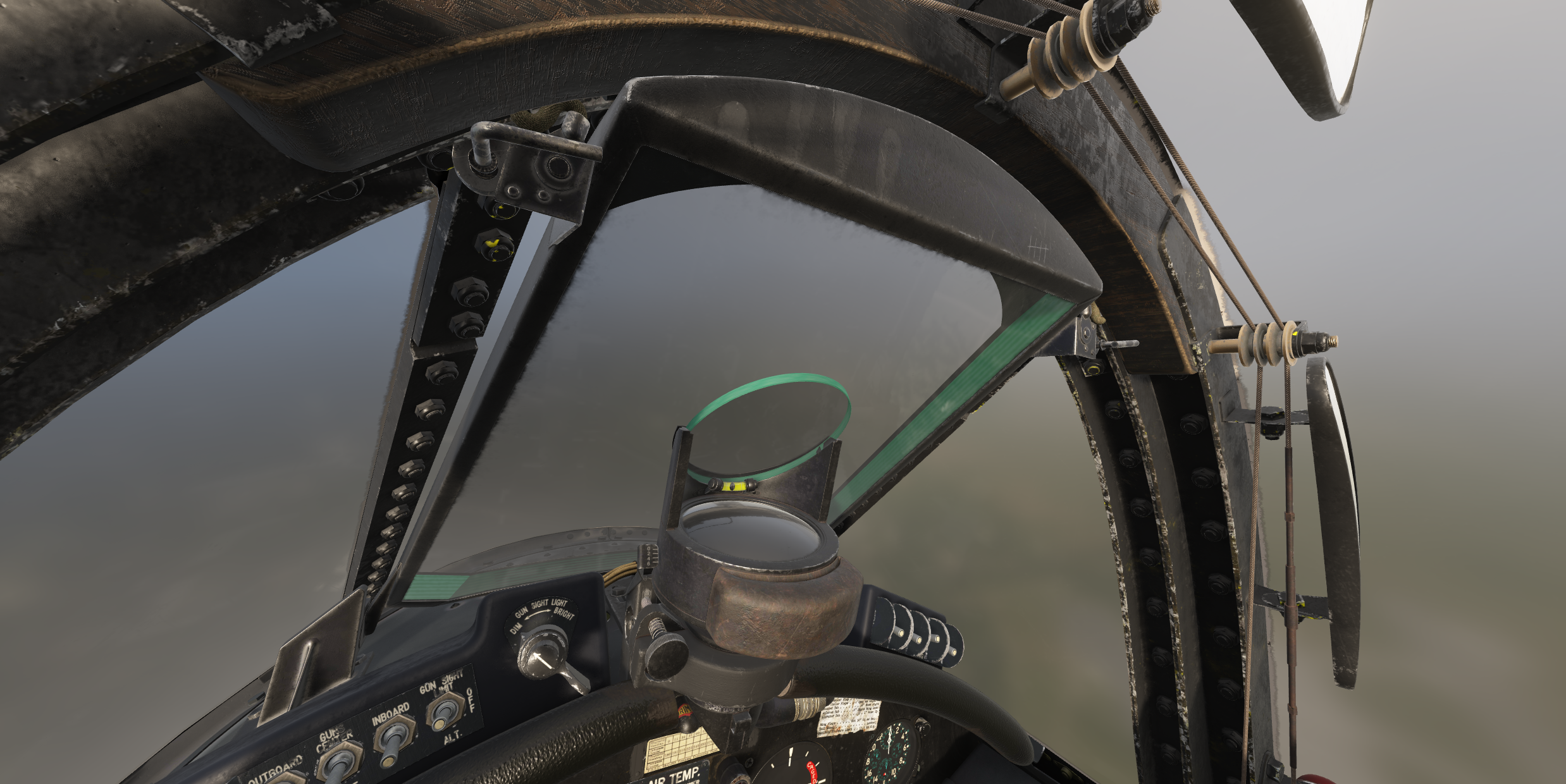
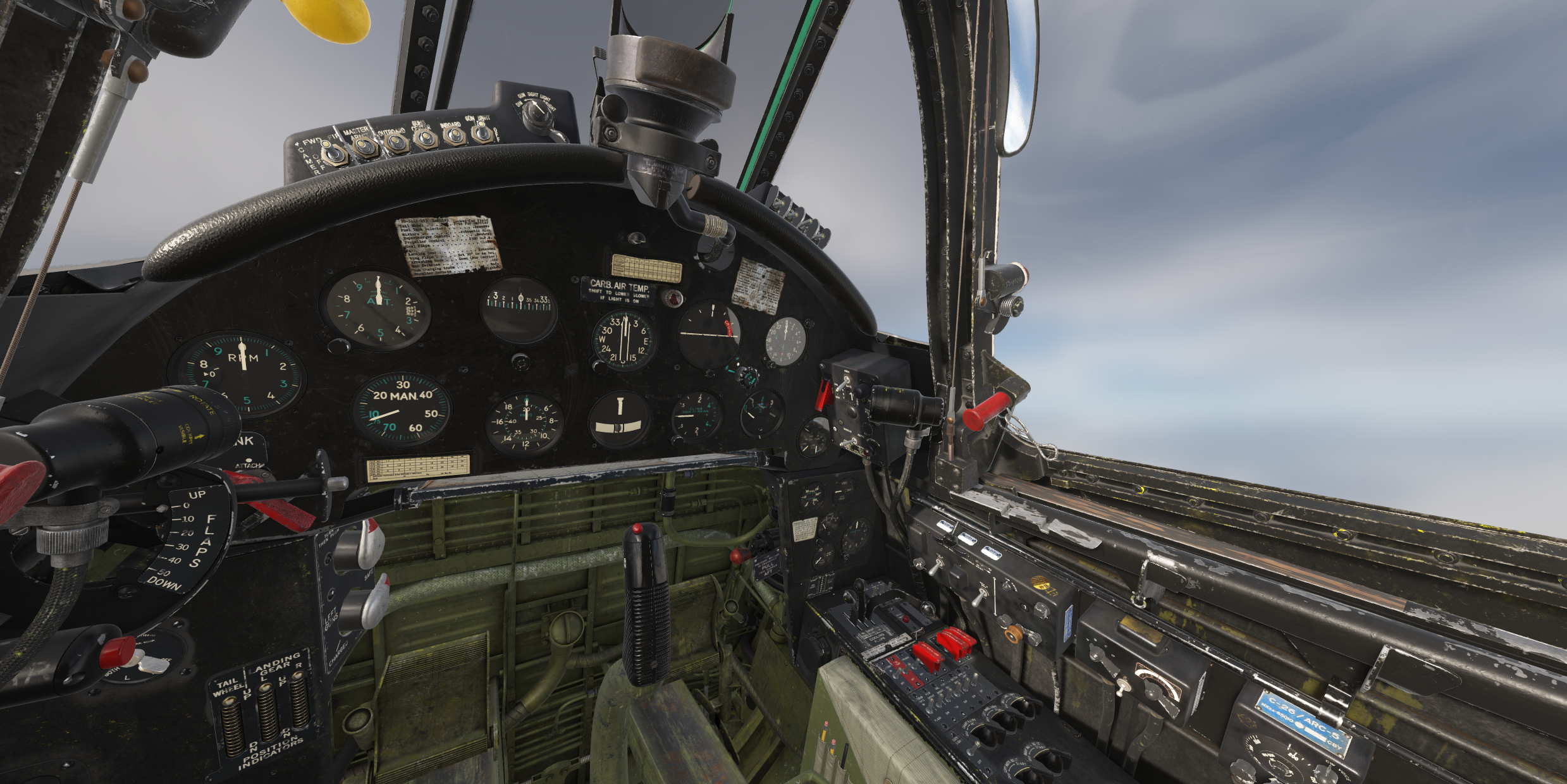
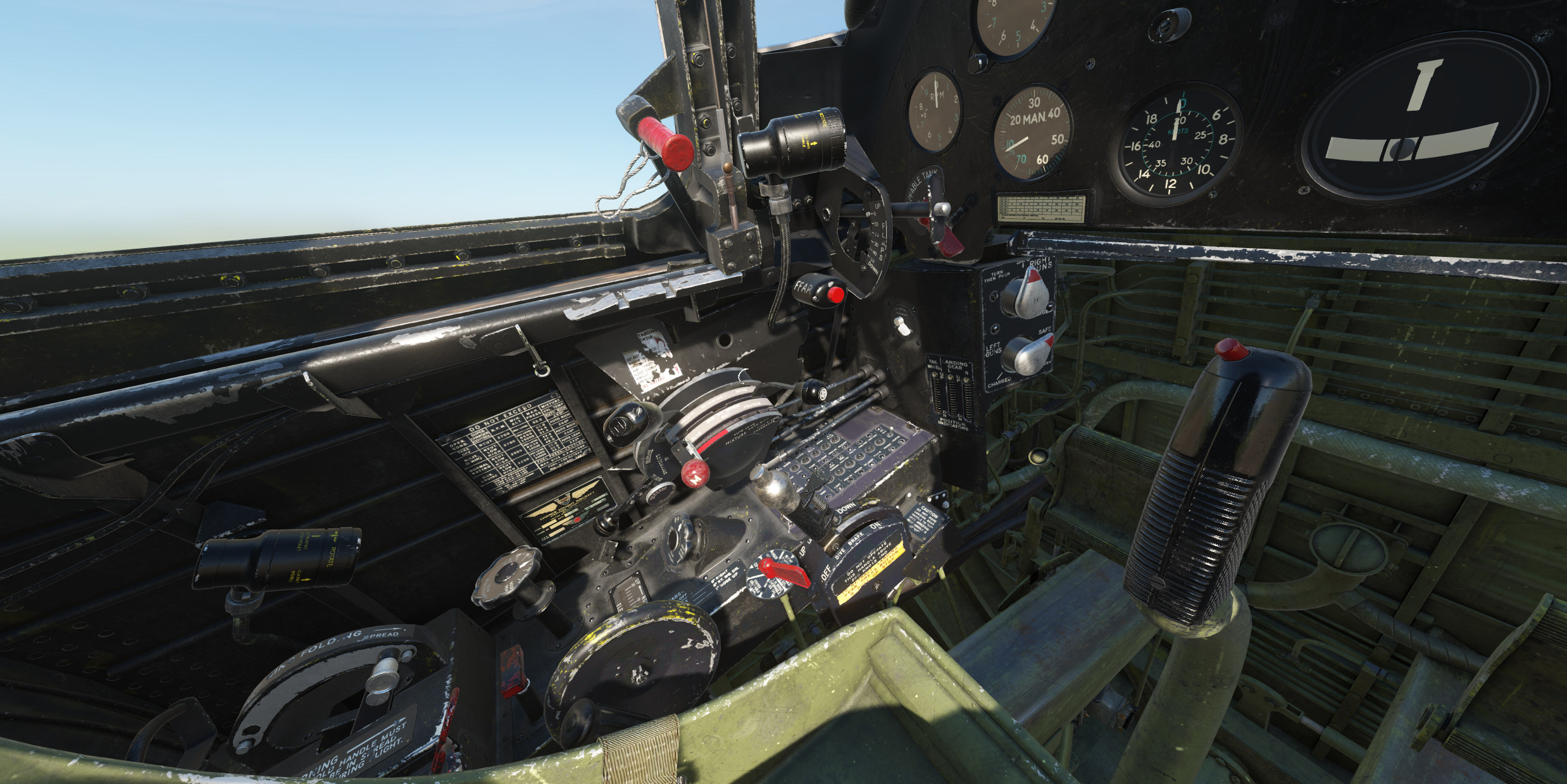
The flood light colors have been corrected, giving off a hint of teal. A new seat harness was modeled along with textures displaying more thread & stitch details. We’ve also added more pilot animations for saluting and catapult launch behaviors with more to come!
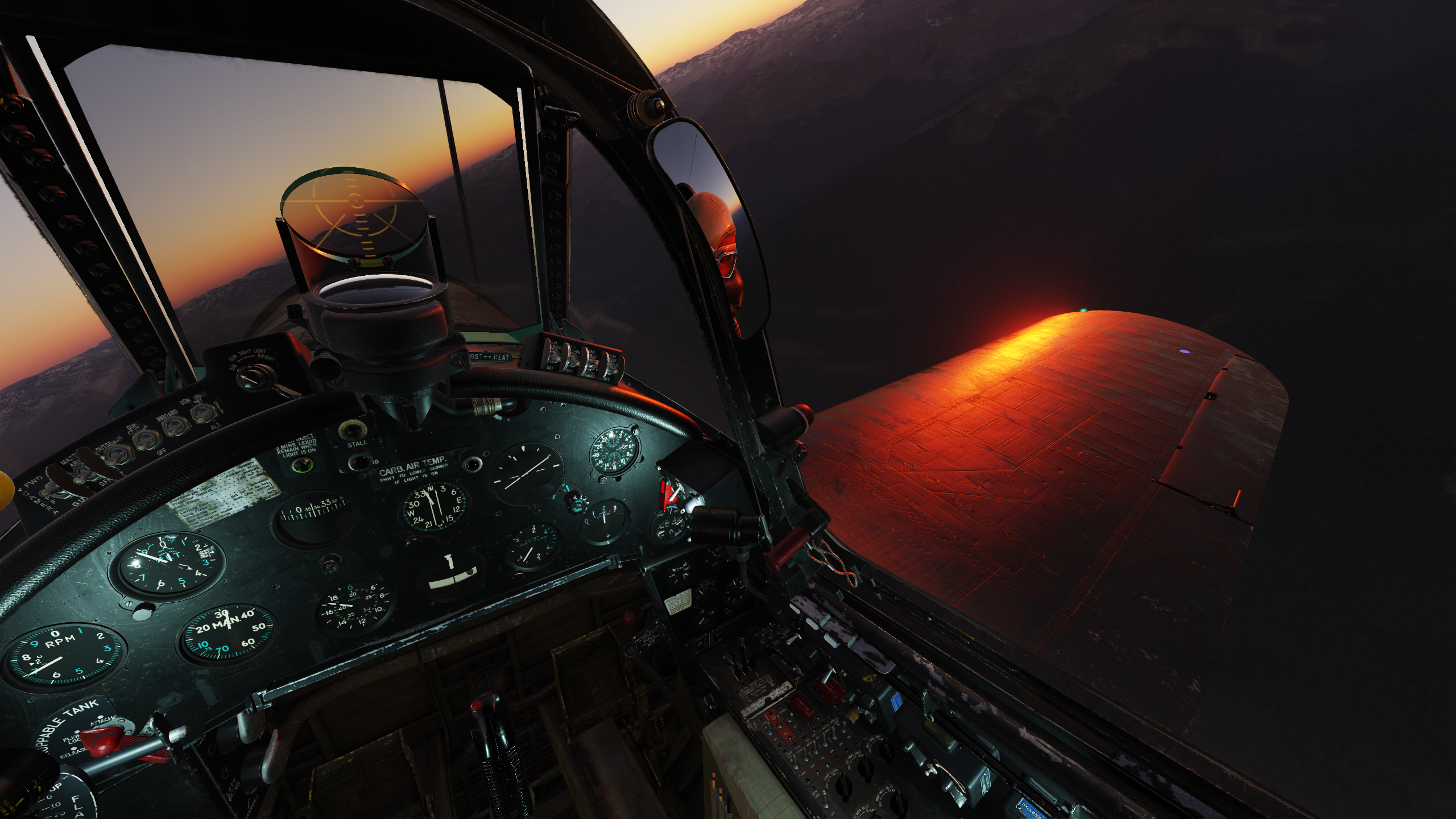
On our last Facebook update, we posted a few screenshots of the damage model in development. We’re happy to say it’s complete and the flight model is being tuned for each damage state. Every rib has been created and painfully destroyed afterwards, showcasing the internal structure of the airframe.
All of our weapons had missing details added and implemented support struts for the external fuel tanks. And, finally, the first iteration of the dynamic aircraft number system has been merged and we’ll continue adding more for other squadrons.


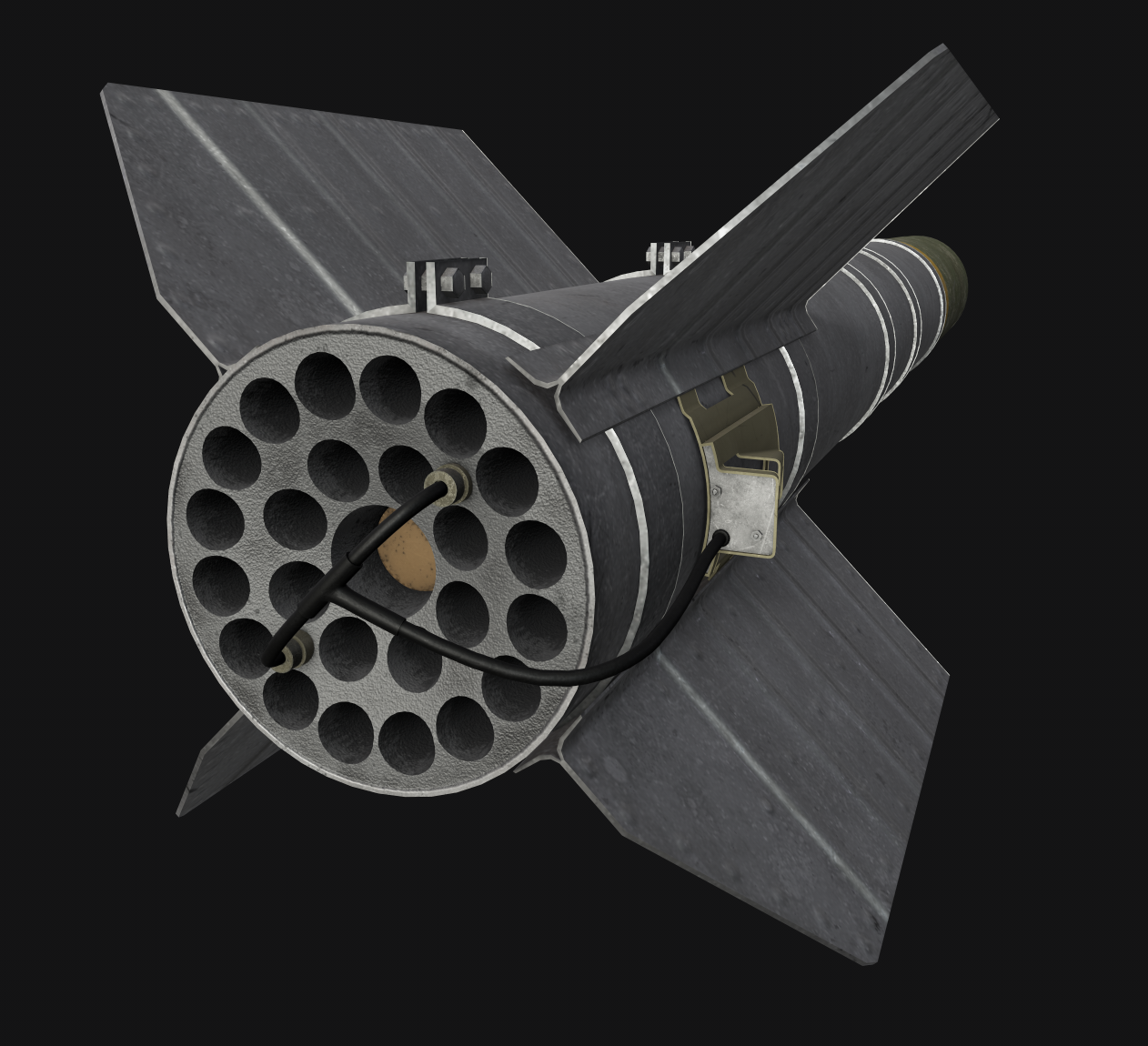
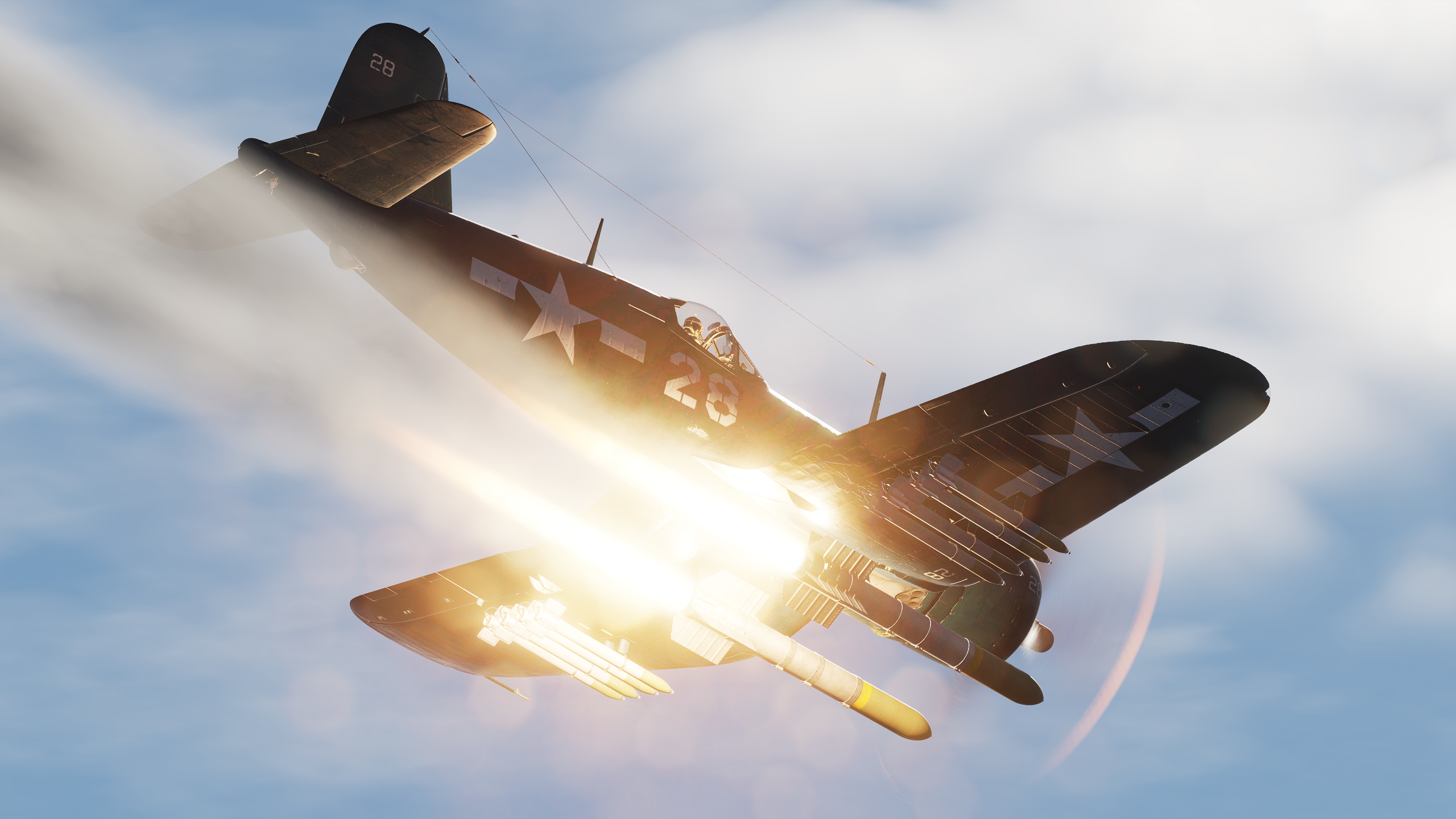


Flyingironsimulations.com ha scritto:
DCS: A-7E DEVELOPMENT UPDATE
We know that you've been itching to find out more, so this report will be purely focused on the development state of the A-7E Corsair II for DCS World. The SLUF has an all new, much improved 3D model and today we're happy to be sharing the first pictures of the new model in-sim!
First, I must apologize for the lengthy gap between development updates. We understand that many of you are keen for more regular update reports, and I will strive to do my best going forward to try and keep the development news flowing through more regularly.
ARTWORK
2023 has been a wild ride for our beloved Corsair; with some difficult decisions being made throughout the year. In our previous report, we unveiled our overhauled and remade 3D model in all of its beauty. The model was exquisitely detailed, and we were very proud of it (and still are) - especially considering the model was built from only photos and blueprints.
In 2023, we recruited a new artist, Oleg, who is a veteran of the industry & aircraft modelling, having worked previously with some of the very best teams in Flight Simulation. Not only an incredible 3D artist, Oleg has extensive experience with photogrammetry; the fascinating process of extracting a 3D model from a real-world object via a detailed photography process.
This presented us with a unique opportunity to do something we've never done before - scan an entire aircraft as the basis of our model. After being presented with this opportunity, we made the very difficult decision to remake the 3D model AGAIN. Now I know what you're thinking, and don't worry - this decision hasn't had any effect on our release projections; there is still plenty of more programming work to be done in tandem. Of course, this decision was very painful for us, having to set aside thousands of hours of work is not a decision to be made lightly.
Ultimately though, we believe that this was the best decision going forward for the team, for the module and for the consumer. Our previous model was excellent, however any model built from blueprints & photos is prone to inaccuracies, as minor as they may be. This is just the nature of dealing with wild blueprint inaccuracies, incomplete photo reference and managing strange photo perspectives and alignment. Photogrammetry eliminates these errors and inaccuracies, providing a true-to-life 3D reference of the model and textures.
The external model has progressed at an incredible pace thanks to the photogrammetry, and soon work will begin on the cockpit remodel.
Now that the new model has been in development for some time, we are absolutely confident that we made the right decision, and we think that these screenshots might just convince you too






PORTUGAL TRIP
Earlier this year, Oleg & all of his gear packed up and made the journey to the Museu do Ar (Air Museum) in Portugal. The museum is home to 2 beautiful A-7P aircraft - one in Ovar, and one in Alverca (plus an additional cockpit display in Sintra). We were lucky enough to be granted full access to both aircraft; not only the exterior and cockpits, but also to internals such as the radar & avionics bays, landing gear compartments and intake!
With perfect weather shining down on our scanning days, we were able to capture near perfect scans of both airframes - giving us not only 1, but 2 complete reference models. This took several days of laborious photography, crawling inside tiny compartments, setting up lighting rigs and capturing tens of thousands of photos from every angle imaginable. As you can see, the end result has been well worth the effort. We are immensely proud of the new artwork and the progress it's been making; Oleg is doing fantastic work and we truly believe it will be up there with some of the best in DCS World.
Of course, we didn't stop there - you don't get an opportunity like this every day! We also used the opportunity to capture video footage inside the cockpit, providing detailed reference of switch, dial and lever motions to provide accurate reference for animation. The final step, using a professional microphone rig, was to capture all of the unique cockpit sounds that we possibly could. Although it would be very easy to use generic switch & lever sounds, we think using genuine sounds from the real cockpit just adds that extra level of immersion & authenticity.

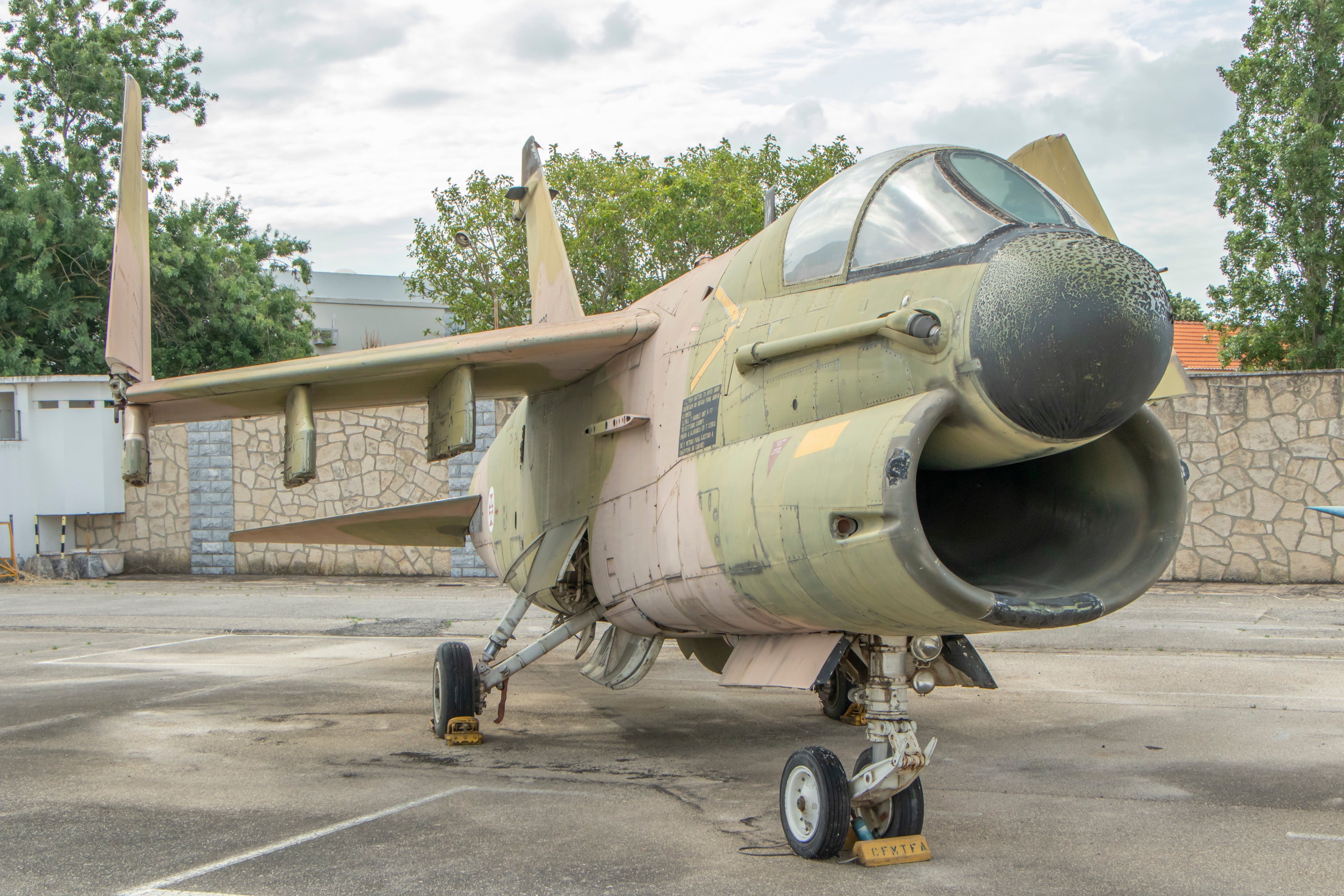

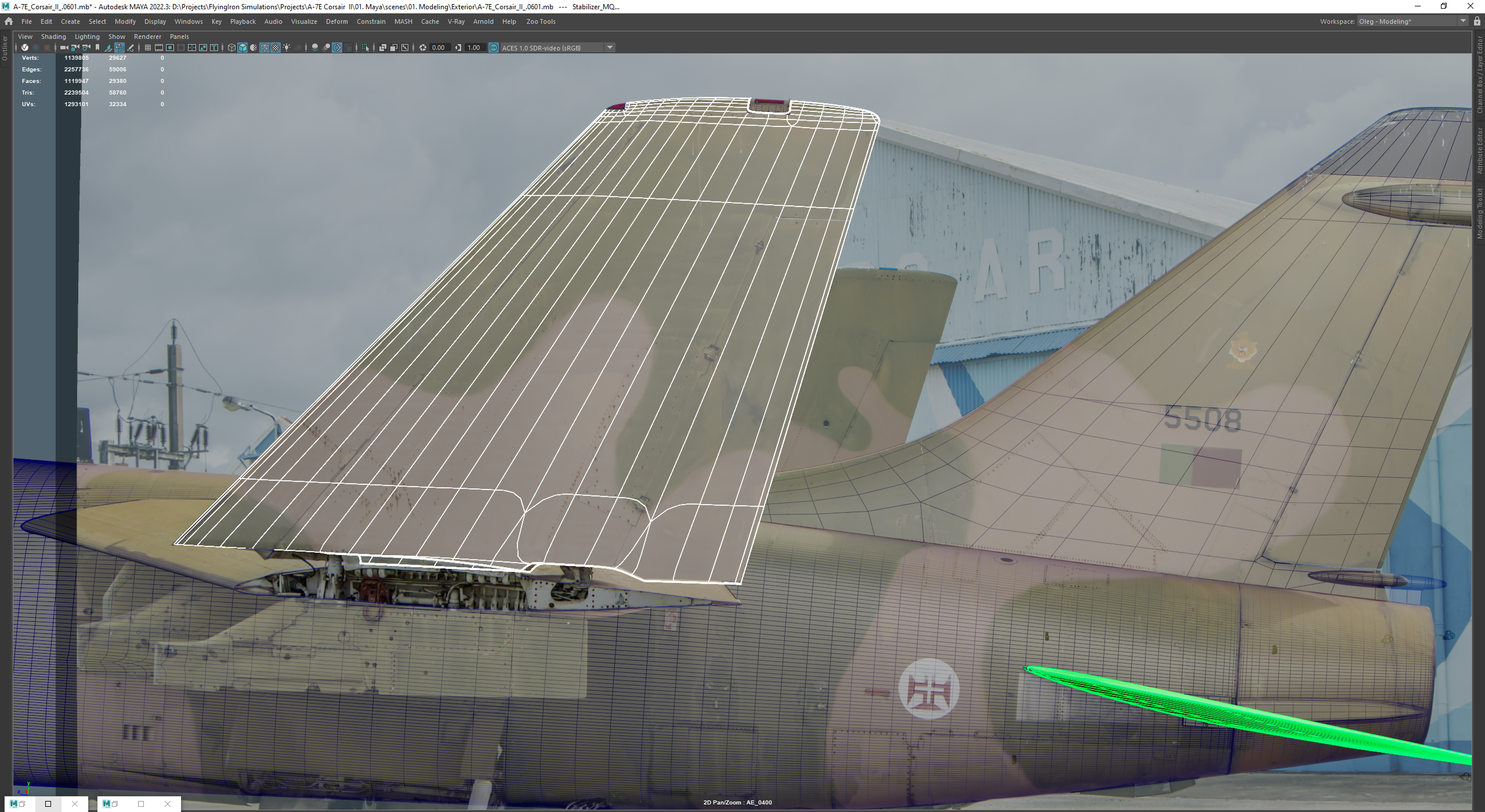
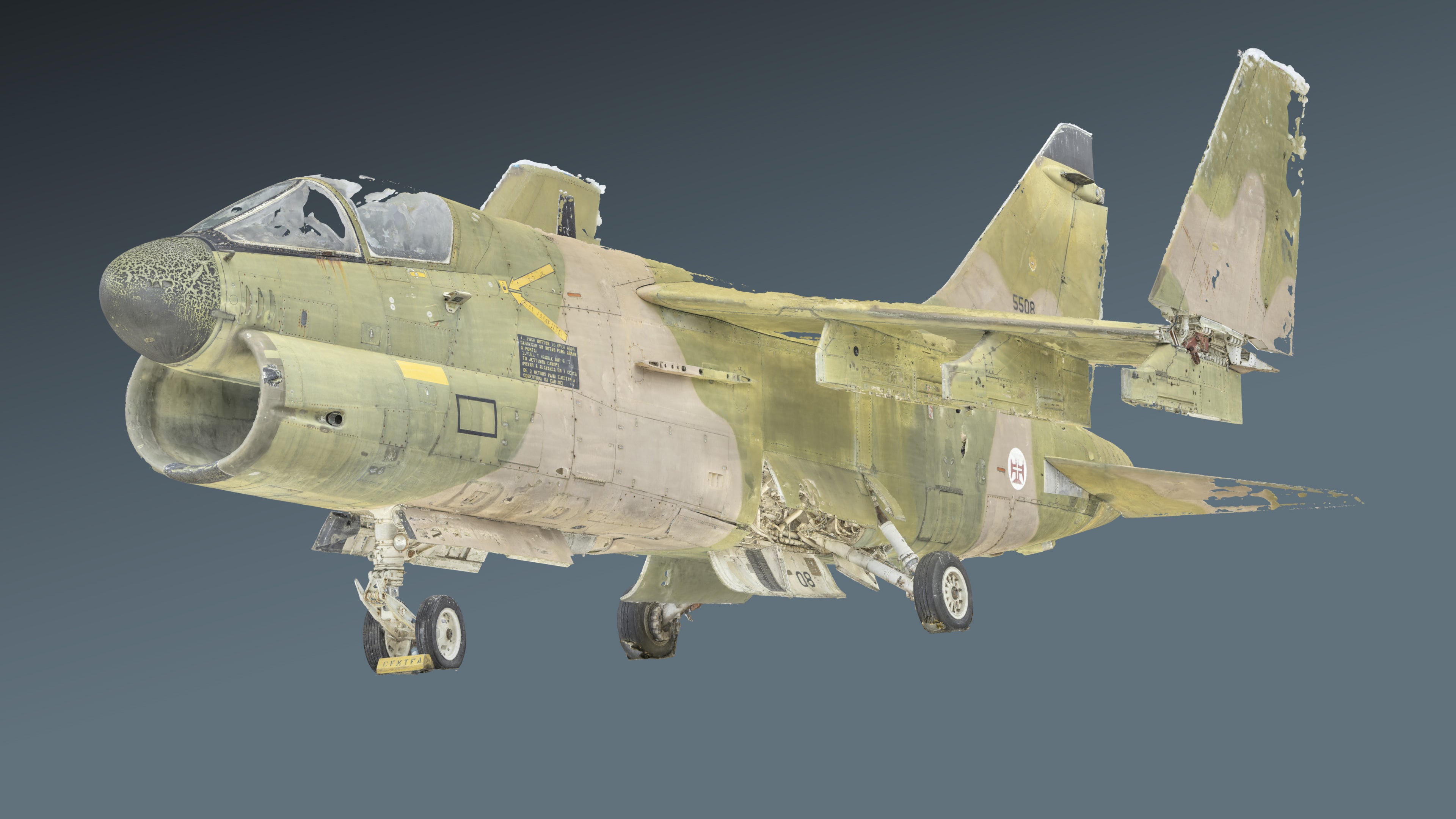
FLIGHT MODEL - MOVING INTO PHASE 4
In the last few months, work has been mainly focused on further developing and refining the flight model, with the aim of getting it ready for testing and into phase 4 of development. It's been quite a lengthy process, requiring a redevelopment of the equations driving the flight model, in order to be able to better integrate the CFD data we have been capturing. We also came across a new source of wind-tunnel data this year, providing more direct data to be used in our tables as well as providing very useful validation data for our CFD model.
Without getting too technical, we have significantly expanded upon our stability & control derivative modelling, replacing previously linear derivatives with complete non-linear data tables, often with 3 or 4 dependencies and inputs. Again, this goes above & beyond the derivatives provided from wind-tunnel testing and provides a more in-depth and accurate simulation of aircraft dynamics, particularly at & beyond the edge of performance envelope.
This year also saw the expansion and development of the TF-41 engine simulation, with much the same process being applied here. Various data reports & engine simulation software were used to create a comprehensive picture of engine performance, with work ongoing to further develop simulations of various engine subsystems & quirks. The TF-41 is a relatively slow engine to respond, adding an even greater challenge to carrier landings and Air Refuelling operations.
Finally, 2023 has seen the completion of the Automatic Flight Control System (AFCS), which includes a complete Control Augmentation System (CAS) as well as multiple autopilot operating modes. We've previously discussed the AFCS in detail and the importance it has on all areas of flight - we're now happy to report that it is finished and awaiting testing!
OPTIMIZATION & EFFICIENCY
An EFM in DCS World is typically simulated every 0.005 seconds - meaning that the flight model is updated & recalculated 200 times every second. This is necessary to allow for the accurate computation of aerodynamic models and also for accurate reading of pilot inputs, providing an appropriate level of sensitivity and resolution. Given that an aerodynamic model consists of huge amounts of data (often thousands of data points split into as many as 100+ tables) and heavy calculations, any inefficiencies in the EFM model can lead to a degradation in performance at all times in flight.
For this reason, we have been spending time optimizing and improving runtime efficiency in our flight model to try and ensure we have the best possible performance. The focus here was to redevelop our Look-up Table (LUT) model from the ground up, using the latest available research to help direct our efforts.
Without getting too far into the nitty gritty details, we have been able to significantly improve the processing time of a simulation loop by increasing the speed & efficiency of our look-up tables. Typically in a LUT, data is stored in tables, which usually have up to 20-30 rows and often the same amount of columns. The computer will take an input, such as AoA, and loop through the table until it finds the nearest matching values. From there we can do mathematical interpolation to determine the correct value that matches our input. This is repeated for each table (can be 100+ tables), and the whole process repeated 200 times per second.
While this is an acceptable process in most cases, there is certainly room for improvement. One such approach is to store the previous result, and then use that as a starting to place for the next search loop through the data table. This helps, but still requires a full search loop whenever a large change in input occurs. Our new LUT model however does not require any searching or loops; instead, we have developed a clever method that involves manipulating our data sets so as to maintain a linear relationship between inputs & corresponding data tables, so that the table index (or where to look in the table) can be simply computed from the table input value.
We have of course expanded the model to include n-dimension tables, so that it is ready to handle any fresh CFD data we can throw at it! It was important for us to get this right, not only for the performance reasons above but also because the LUT model is a cornerstone of the EFM, and can be reused in any future modules.
CFD WORK
You'd be forgiven that we would be finished with CFD work on the A7 by now, but not quite! Previously, our CFD model was built in NASA's OpenVSP software, meant to only be a crude representation of the A7 with a very simple, performance based mesh. This has given us acceptable results over the last year, most of which has been implemented into the Flight Model already.
However, having captured the scans on a real A7, the opportunity to collect fresh & more accurate CFD data was suddenly available. So this year, using the scan as a base, we have been busy also rebuilding our CFD mesh; this time using a much more detailed and accurate mesh. Given that CFD is entirely mesh dependant, an upgrade to mesh fidelity consequently provides an increased data resolution and accuracy. This was particularly beneficial for capturing peripheral data that is not present in the literature, such as landing gear forces, speedbrake forces and so on. Our previous mesh was very simplistic, and thus only captured a general idea of the forces. Now however, we are building our CFD mesh from Oleg's incredible scanning and modelling work, providing 1:1 accuracy with the mesh and consequently the data collected.
It has been a difficult & intensive process, as anyone that has worked in CFD can undoubtedly attest to. Fortunately, we have been working closely with Research in Flight once again to further refine our new model and ensure validity of our collected data. It is a large undertaking and fairly heavy workload, however we are grateful to have the opportunity to work with the experts to really develop our CFD knowledge & skills; not only is it a huge benefit to the A7, but it also opens the door for us to be able to model any future aircraft with full EFM fidelity.
Here you can see just a very, very small sample of some of data collected from a test run of the landing gear model.
MECHANICAL SYSTEMS
The Corsair has a beautiful duality as an aircraft; it was a technological pioneer of the time, featuring the first fully-fledged Heads-Up Display unit that we are so familiar with in modern aircraft. Yet, it was also very much an 'analogue' jet of the past, lacking the huge array of sensors and digital control systems that modern fighters are equipped with. The Corsair is a very much a hybrid of the two; a transition between two eras in military aviation.
With this in mind, we've been spending some more time this year really expanding upon our simulations of the aircrafts mechanical systems such as gear & ground operations, carrier ops & systems, hydraulic & fuel systems. While these aren't as flashy as the weapons & avionics systems, these elements make up a considerable portion of the airframe, procedures and overall simulation experience, and its important that we get them right.
As a simple example, the speedbrake is hydraulically operated, but not immune to the intense forces of high-speed flight. It will be buffeted and pushed back, partially retracted by a strong enough airflow. It is prone to drooping & partially opening should PC2 hydraulic pressure fail. It cannot be operated with gear extended, unless using a manual PC2 hand pump when on the ground. We have done our very best to capture all of these quirks & details, really developing the unique character of the Corsair II airframe.
As we are modelling a later-era Corsair, the airframe includes Automatic Manoeuvring Flaps (AMF), an advanced flap control system designed to increase turn performance and manoeuvrability in lower speed conditions. The system operates by partially extending the trailing & leading edge flaps when angle of attack exceeds 14.75 units at an airspeed below 0.7 mach, retracting again below 10.5 units AoA or above 0.7 mach. The AMF system has been completed & integrated fully in 2023!
CARRIER & GROUND OPS
We are happy to report that the Corsair is now operational off the carrier deck, having made her maiden launch & trap several weeks back. Landing a Corsair on the ship is immensely difficult, and success will not come easily. We have to commend the incredible skill & courage of real-world Corsair pilots; to be able to regularly achieve such a feat is nothing short of extraordinary.
We have completed work on the launch bar system and its various safety measures & dependencies, as well as the arresting hook system, nosewheel steering, braking systems, landing gear systems and much more. To give you an example of the work that's been happening, lets discuss the Nose Gear Steering system as an example.
The Nose Gear Steering (NGS) system is the power steering of the Corsair; it is electrically controlled & hydraulically actuated via a hydraulic cylinder mounted on the nose gear shock strut. When the system is deenergized, it provides an automatic nose gear shimmy damping function - essentially damping nose-wheel wobble and providing a smoother taxi. Engaging the system via the Nose Gear Steering button on the grip allows the pilot to steer via the rudders up to 60° off-centre.
Hydraulic power is provided via the PC2 system and requires the utilities isolation valve to be OPEN - it will not function if the valve is closed. Automatic recentring of the nose gear occurs during gear retraction, or when the right gear weight on wheel sensor determines there is no weight on the gear. When this happens, a servo valve repositions to block PC2 hydraulic pressure. A spring-loaded damper shutoff valve then moves into position, connecting the left & right sides of the nose gear steering system to a damping orifice, restoring the automatic shimmy damping functionality.
We are quite pleased that we've been able to capture & simulate this functionality; it will be important to follow procedures correctly when flying the Corsair. As you can see, the technology used is slightly older than what you might be used to, and has some more limitations than modern aircraft. There is alot to remember, even with something simple such as the Nose Gear Steering. You'll need to make sure your utilities valve is open, flap settings are correct, hydraulic pressure is okay and even then you'll always need to be on your toes to ensure you don't exceed that 60° limitation or you may be in for a rapid departure off the deck!
In a similar vein, we have completed work on the braking system - featuring simulation of antiskid behaviour, PC2 pressure dependency and an additional emergency wheel brake system. Landing Gear operation also requires correct management of the utilities isolation valve, and features a similarly detailed emergency release system. I won't go into as much detail on these systems, but each has been carefully crafted to match the detailed operation procedures and information available in the NATOPS & pilot manuals (as well as with pilot input of course!).
There have been a few challenges along the way, such as overcoming DCSs rigid body physics in-order to create a realistic simulation of hydraulic compression, something that is seen during a carrier landing when the arresting hook is compressed. Most likely you might never notice these types of details when you fly the Corsair, and thats good however extensive work has gone into their development in order to provide a natural, realistic experience.
Most of these core systems are in various stages of completion now, with work on-going on the suspension model & fuel systems.
SENSORS & AVIONICS
Much time has been spent this year on improving the realism of the flow of information that occurs through the A7's suite of computers and sensors. Every display, every computer, every calculation throughout the avionics suite relies on data that is collected via specific sensors in the aircraft. These sensors pass data through to the AN/ASN-91(V) Tactical Computer, the central brain & processor of the avionics suite. The computer can then run calculations as needed, and feed data to various displays and systems. As you might imagine, any disruptions in this chain of information can have severe consequences on the quality and availability of data available to the pilot.
Fortunately, the NATOPS manual goes into great detail regarding this flow of information & we are also lucky to have access to a paper that extensively details the inner workings of the software used in the avionics suite. You can see an example below, just one page of many demonstrating the flow of information through the aircraft.
To this end, we have been working on detailing our aircraft sensors - the first part of the information chain. We have created an accurate simulation of the Corsairs unique Angle of Attack system, which used non-standard AoA 'units' instead of degrees and is a key data element for a number of display & guidance systems. Work is ongoing to correctly model damage to any sensors, and the consequential disruptions this has on the avionics suite. We are quite pleased with the progress we've made on this front through 2023, having completed the Air Data Computer, begun work on the IMS and have completed integrating most of our systems correctly within the chain of information.
Work has now also begun in earnest on the Tactical Computer, one of the most sophisticated parts of the aircraft (and consequently most complex to develop). The Corsair does not have any modern MFD's; consequently any inputs the pilot needs to make, settings that need to be changed, data that needs to be read - it all happens via the Tactical Computer and its numerical inputs. The functionality of the Tactical Computer is enormous and beyond the scope of this report; however I have included some of the input codes below to give you a taste of how the computer is operated, and the extensive amount of information that can be accessed and edited as required.
Whilst much of the basic functionality of the Tactical Computer has already been done, we expect we will be continually working on advanced features right up until release.
WHEN WILL IT BE FINISHED??
Two weeks
Just kidding, unfortunately we still don't have a solid estimate on when we will be finished with development. Officially, we are expecting to move into Phase 4 of development sometime early next year, with the aim to begin testing at some point during the year.
We are only a small team, without the resources to really expedite development over a couple of years. What we do have in spades is passion for the aircraft, and a willingness to craft if to the absolute highest standards, as long as that may take. We do want to extend a sincere thank you to everyone reading this, everybody that stops into our discord to chat about the A7 and everybody leaving comments on our social media and blog posts. Truly, you guys have been so patient and supportive of our work, it fills us with pride to be a part of such an excellent community of aviation enthusiasts. Thank you!


Graphics - ED Team ha scritto:
AGM-45 Shrike Development Progress
In the lead up to the highly anticipated DCS: F-4E Phantom early access by Heatblur Simulations, we have prepared a preview of the new AGM-45 Shrike anti-radiation missile currently in development.
As many aviation weapons experts know, the first generation of anti-radiation missiles that appeared in the 1960s, such as the AGM-45 Shrike, had interchangeable seekers tuned to different frequency bands. At that time, it was not possible to make one broadband universal seeker, so seekers were mounted on missiles before flight in accordance with the target type it was planning to strike.
The Shrike has 10 interchangeable seekers tuned to different frequency bands that overlap each other. Wider bands are suitable for attacks on a family of similar radars, whereas narrower ones are for hitting specific types of radio-emitting equipment.
The AGM-45 Shrike missiles were widely used in the US Air Force by many tactical aircraft since the Vietnam War. In fact, they were the main ARM of both the multi-role F-4E Phantom aircraft and the specialized F-4G Wild Weasel. In DCS, you will be required to select the seeker from a special weapon settings panel in the Mission Editor.
